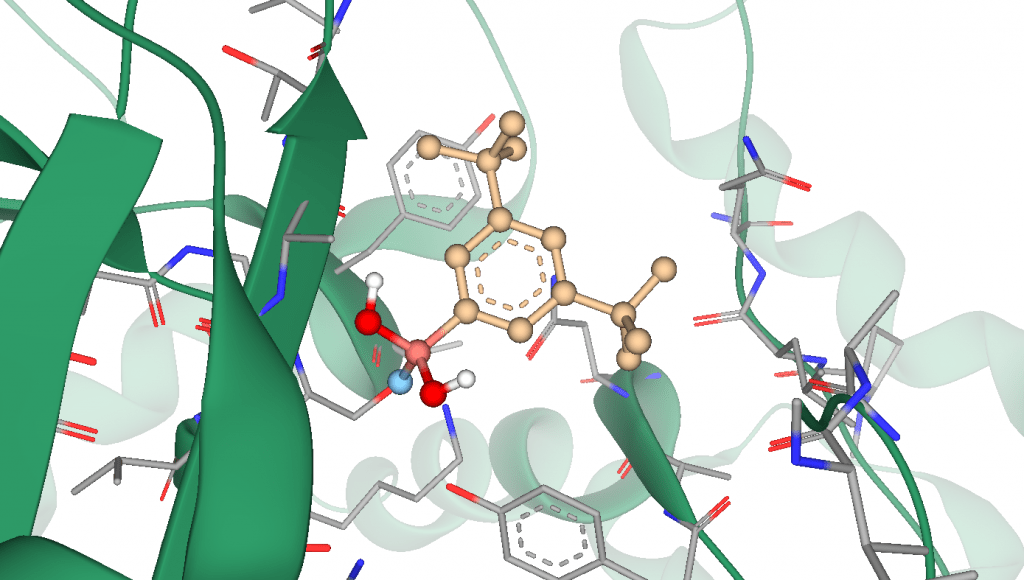Covalent docking, is one of the main innovations of the upcoming SeeSAR 11 release called ‘Hephaestus’, inspired by the Greek god of craftsmen, artisans, forgery, and vulcanoes.
Covalent ligands bear a functional group or motif in their molecular structure, the so-called ‘warhead’, which interacts with an nucleophile side chain (e.g. cysteine, serine, lysine, threonine) forming a bond between target and ligand. They are proposed to offer multiple advantages, including high-selectivity, low-toxicity, and modifiable in vivo half-time. Furthermore, covalent ligands are perfect candidates for high-quality complexes for crystallographic structure determination as they greatly contribute to stabilization of certain conformations.
Already got a covalently-bound complex at hand? With the Hephaestus update, SeeSAR will support you during every step of your covalent design process. You can easily pick your ligand and edit the structure within the Molecule Editor Mode. SeeSAR’s integrated visual assessment will directly tell you what modification can contribute to the affinity of the ligand and where you should consider stuctural modifications.

If you have a fragment-bound complex at hand and want to convert it into a covalent binder, you can do so by adding a covalent linker structure to your molecule and select a residue of interest. After docking, SeeSAR provides you with the necessary data to analyze the generated poses regarding torsion angles, inter- and intramolecular clashes and the contributions of every atom via the HYDE affinity assessment.

The features will greatly complement the toolbox of every medicinal chemist and molecular modeler working with covalent targets and ligand. Alongside the design and the docking of possible covalent drug candidates, we have added a whole set of powerful and valuable tools to assess and effortlessly presents your results, including the export of 3D models. SeeSAR for yourself what other innovations are coming here.





